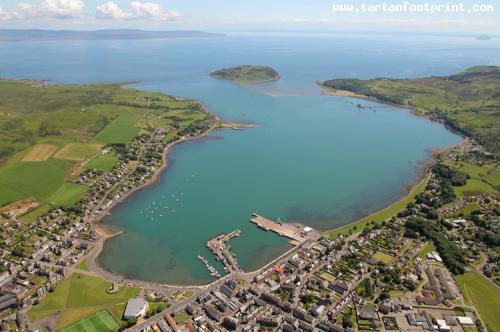You seem to be using an older version of Internet Explorer. This site requires Internet Explorer 8 or higher. Update your browser here today to fully enjoy all the marvels of this site.
December 15, 2018 by Alexander Meldrum
Scotlands Citys & Towns
Campbeltown
Campbeltown (/ˈkæmbəltən/ (About this soundlisten); Scottish Gaelic: Ceann Loch Chille Chiarain or Ceann Locha) is a town and former royal burgh in Argyll and...Scotlands Citys & Towns
Campbeltown
Campbeltown (/ˈkæmbəltən/ (About this soundlisten); Scottish Gaelic: Ceann Loch Chille Chiarain or Ceann Locha) is a town and former royal burgh in Argyll and Bute, Scotland.
It lies by Campbeltown Loch on the Kintyre peninsula. Originally known as Kinlochkilkerran (an anglicization of the Gaelic, which means "head of the loch by the kirk of Ciarán.
it was renamed in the 17th century as Campbell's Town after Archibald Campbell (Earl of Argyle) was granted the site in 1667.[4] Campbeltown became an important centre for Scotch whisky and a busy fishing port.
Whisky
Campbeltown is one of five areas in Scotland categorised as a distinct malt whisky-producing region and is home to the Campbeltown single malts. At one point it had over 30 distilleries and proclaimed itself "the whisky capital of the world". However, a focus on quantity rather than quality, and the combination of prohibition and the Great Depression in the United States led to most distilleries going out of business. Today only three active distilleries remain in Campbeltown: Glen Scotia, Glengyle, and Springbank.
The well-known folk song titled Campbeltown Loch, I wish you were whisky is based on the town's history in this industry.
Campbeltown boasts a museum and a heritage centre. The museum has a varied collection of items from Campbeltown's past, and prehistoric items excavated from sites around Kintyre, such as axeheads, jewellery and combs.
The 19th-century building, by John James Burnet, also houses a library and has plaques or exhibits related to famous Kintyre people: for example, William McTaggart and William Mackinnon. Near the museum is the cinema known as the Wee Picture House, a small but distinctive Art Nouveau building of the Glasgow School dating from 1913 and believed to be the oldest surviving purpose-built cinema in Scotland.
These buildings are on the waterfront, as is a 14th-century Celtic cross that also served as a Mercat cross.
St Kieran (Ciarán of Clonmacnoise) lived in this area before the town existed. A cave named after him can be visited at low tide, as can the cave on nearby Davaar Island where pilgrims and tourists go to see a 19th-century crucifixion painting.
Campbeltown also hosts the annual Mull Of Kintyre Music Festival, which has seen acts ranging from up-and-coming local bands to well-established groups such as Deacon Blue, The Stranglers and Idlewild perform.
A recent addition has been the Kintyre Songwriters Festival, a fairly low key annual gathering aimed at promoting the wealth and variety of original music across the area.
The festival is held during the last weekend of May and is open to anyone interested in performing.
On Friday 16 June 2006, First Minister Jack McConnell flew to Campbeltown to officially open Campbeltown's new 'Aqualibrium' Centre. Aqualibrium, designed by Page\Park Architects, replaced the old Campbeltown swimming pool,
which closed 7 years ago[when?] due to safety concerns; the centre houses Campbeltown's library (with the old building being the museum only), swimming pool, gym, conference centre and 'Mussel Ebb' Cafe. The Kintyre Camanachd are a local shinty team that belongs to the Camanachd Association.
Argyll FM is a local radio station based in Campbeltown on 106.5, 107.1 and 107.7 In May 2012 Campbeltown and Dunoon were jointly named in a report by the Scottish Agricultural College as the rural places in Scotland most vulnerable to a downturn. The "vulnerability index" ranked 90 Scottish locations according to factors associated with economic and social change.
Go to Wikipedia for full History
In this photo:


